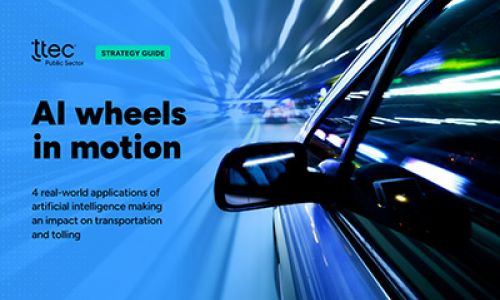Months into the pandemic, COVID-19 has continued to place an incredible burden on government agencies. The need for information on unemployment, testing, and safety guidelines has call volume skyrocketing. Meanwhile, the rapid acceleration to remote work has upended the norms in a traditionally brick-and-mortar environment.
After managing the crisis, citizens will be looking at how to transition to back to normalcy. That’s why the time to look forward is now. What agencies need to understand is how they can adjust post-crisis by recognizing the new normal of work.
Government agencies need to understand the innovations made during the pandemic and how they can continue to utilize these changes to serve their citizens and employees well into the future. Here are five changes made in reaction to the crisis that will last to shape the future of public service.
1. A new distrubted workforce
The crisis has completely transformed remote work. Agencies with only a few centralized brick-and-mortar locations or those with limited remote capabilities were surprised by the speed that business continuity plans had to be enacted. Organizations that fared better had a distributed footprint already in place, so when the unexpected came, they had resources ready to disperse. Work-from-home proved to be a viable option for government agencies that had never before considered it.
I predict that post-crisis the old distribution model will be forever changed into a hybrid of remote and brick-and-mortar work. De-centralized physical locations will allow for maximum diversification in skills, resources, and locations for essential government work. The flexibility of being able to deploy workers from anywhere creates a workforce that can be used to suit various volumes and support needs, depending on the situation.
2. Crisis-proof scalability and remote resources
Government leaders will be more heavily prepared for the unexpected moving forward. Natural disasters and human factors will always be cause for unexpected volumes of citizen support. The flexibility of service capabilities brought on by remote work will enable agencies to more readily deploy emergency staff in times of distress. When future citizen outreach surges unexpectedly, agencies that can pivot and scale support capacity quickly will be invaluable to meet the public need and manage through crises.
3. Digital-first experiences
Digital transformation tools were once seen as an investment that could be saved another time. Not anymore. During the crisis, customer-facing organizations promptly woke up to the mission-critical benefits of digital tools when they had to deploy solutions quickly. Automation, AI-enabled learning, messaging, and cloud-based systems are just some of the digitally driven enhancements that improve experiences.
Government agencies can utilize these automated capabilities to quickly improve resolution and satisfaction for commonly asked questions while streamlining processes so that employees can focus on the human touch for empathetic interactions. Redirecting emergency and non-emergency issues to the most appropriate people and digital channels will help serve those who need it most.
4. Growing CX self-service
Massive effort was needed to support the urgent public health and unemployment needs when the pandemic hit. The shift of available human resources to the most pressing issues made self-service deflection a strategic imperative for many organizations. Smart IVR, online FAQs, automated chatbots, and enhanced knowledgebases became critical call deflection solutions for non-emergency calls and common questions.
The push for self-service has enabled organizations to get more out of their service capacity with the same units of labor in this time of emergency. The advancements made here will be incredibly useful for providing citizens with relevant information quickly without having to force everyone into the voice channel.
It’s also worth noting the investment made in knowledgebases will be critical down the road. Self-service is only as successful as the core knowledge assets and the units that use them. It will be critical down the line that government agents can provide relvent information for those in need.
5. Meeting unconventional security policies
The influx of work-from-home staff created new security concerns. In addition, traditional employee vetting such as in-person interviews and drug testing proved to be incredibly challenging due to facilities being overrun with much larger priorities.
As remote work becomes more common, security and policy factors can be reviewed and adjusted to protect sensitive citizen information and comply with different work scenarios. Security leaders will have to rethink what media can be allowed on employee’s computers, blocking USB storage, or enforcing hardware restrictions if they are working remotely. Alternative monitoring through video programs such as Zoom will be also essential to assess an employee’s workplace, as well as providing that valuable face-to-face contact.
Adapt and overcome
The pandemic continues to affect all walks of life and every industry. As government agencies continue to pull through this crisis, they need to be aware of the lessons learned by others so they to can continue to serve their communities in new ways. What we are seeing in both the private and public sectors can help everyone move towards a bright future.
If you would like to learn more about government continuitu and resiliencey options, visit TTEC’s Contact Center Crisis Task Force Resources Center to succeed in citizen outreach.







